
To provide examples on how the web server can be used for protein binding site prediction, we illustrate some case studies used to analyse protein-drug interactions in different perspectives.
ABL2 protein is a type of non-receptor tyrosine kinase, and is known for its involvement in cell growth and survival, where it coordinates actin remodelling through tyrosine phosphorylation. The protein is inhibited by imatinin mesylate, that is indicated for chronic myeloid leukemia (CML). One of PDB structure of ABL2 protein is from Homo sapiens (PBD ID: 2xyn) that is bound to an experimental ligand (PDB Ligand ID: VX6), an experimental ABL2 inhibitor. It is of interest to know other drug molecules that could bind to this protein. The web server can be used to search for possible drug molecule that can bind to ACK1 protein through structural similarity searches.
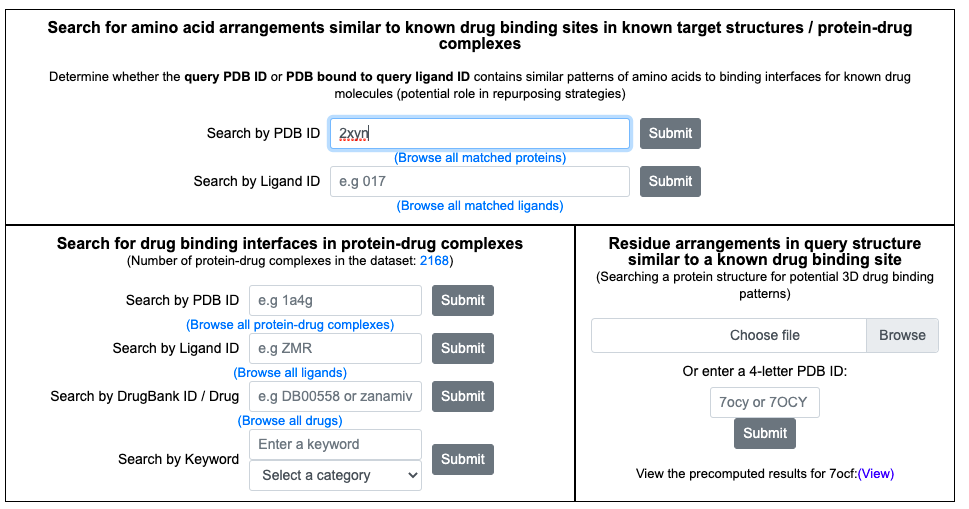
From the ‘Search for amino acid arrangements similar to known drug binding sites in known target structures / protein-drug complexes’ interface, PDB ID search for ‘2xyn’ returns a list of representative proteins. For the ASSAM searches, a database of representative protein structures with sequences at 90% sequence identity cut-off was used.
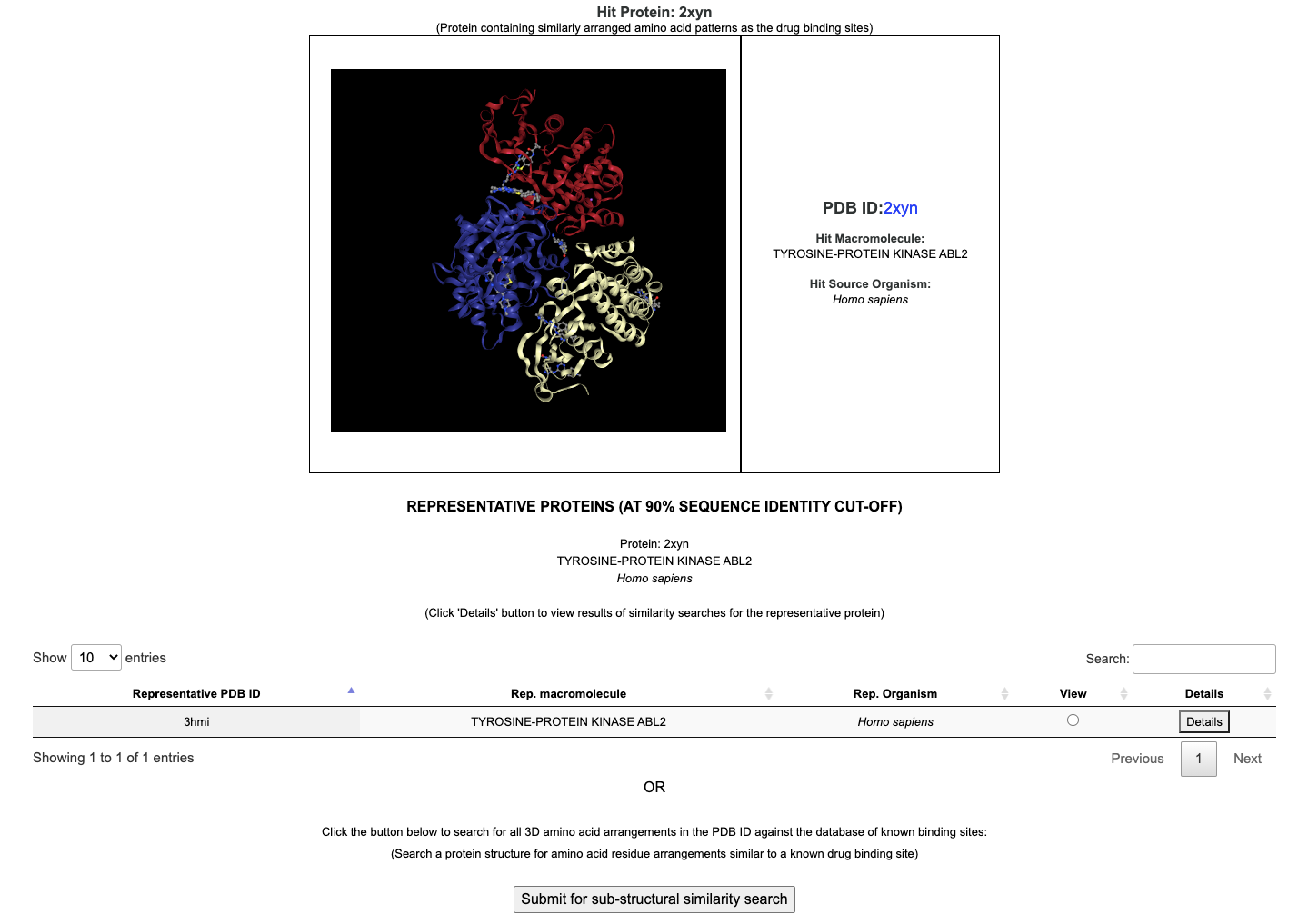
The list suggested a representative protein for the ABL2 that has at least 90% sequence identity to the query protein, the ACK1 from human (PDB ID 3hmi).
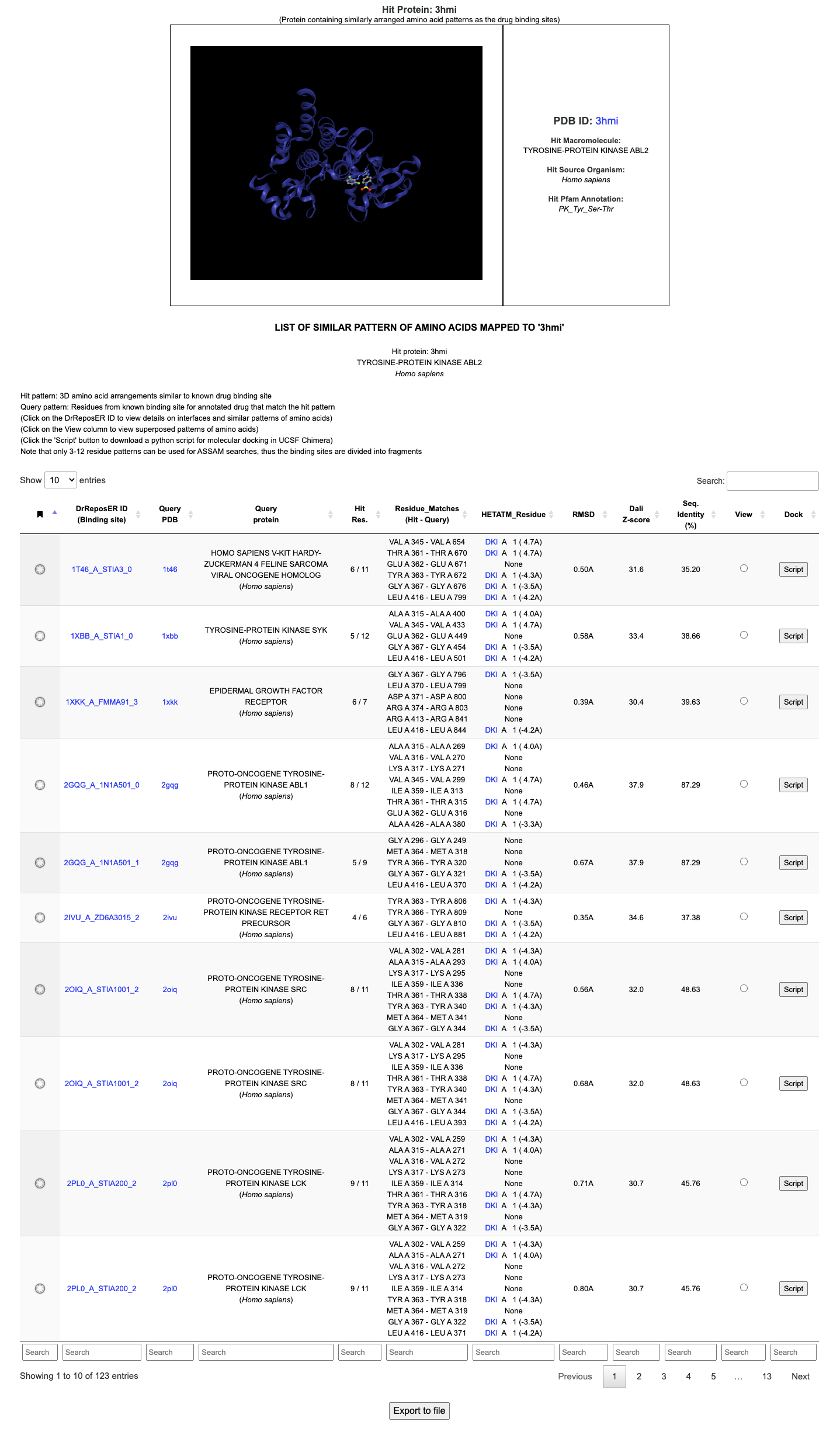
(Link)
Clicking the 'Details button' will direct user to a results page for PDBID 4hzr, that contains structural details and visualization of the protein structure, as well as a list of similar patterns of amino acids derived from ASSAM searches. User may filter the list based on RMSD, Z-score and sequence identity values, or select only matches from human structures only by filling in the search box under the 'Query protein' column. Optionally, user may click the 'Submit for sub-structural similarity search' button to search for potential sites that are similar to known binding sites in the query protein.
User can click on the DrReposER ID to get more details related to known drug binding sites having similar patterns of amino acids as the query structure.
Clicking the 'View' link on the 'View' column will shows superposed patterns of amino acids in the NGL viewer. User may also click the Script button under 'Dock' column to download a python script that can be used for molecular docking in UCSF Chimera. Note that the full path to the Autodock Vina must be manually defined in the script.
The query protein, ABL2 is bound to an experimental drug (PDB Ligand ID: DKI).
Results from sub-structural similarity searches indicated several matches which propose the potential sites in the query proteins that could probably bind to drug molecules based on similarity of amino acid arrangement to known drug binding sites. Among the drug matches are kinase inhibitors such as lapatinib (FMM), nilotinib.
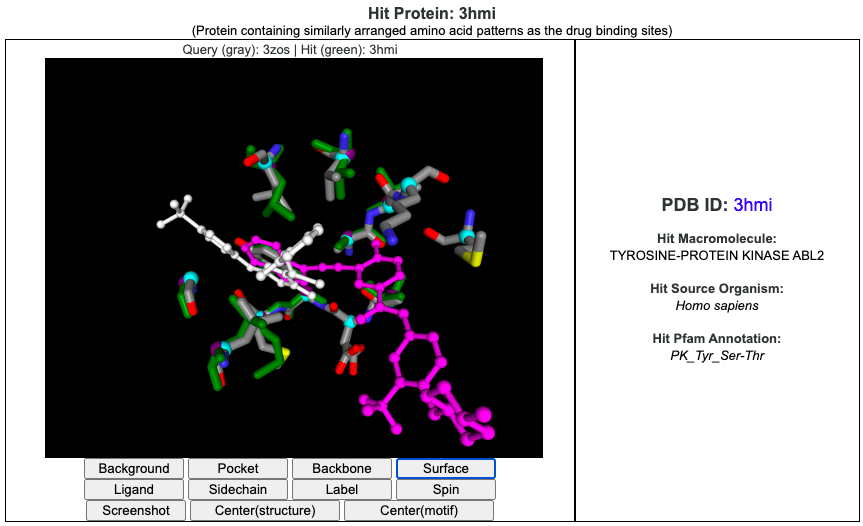

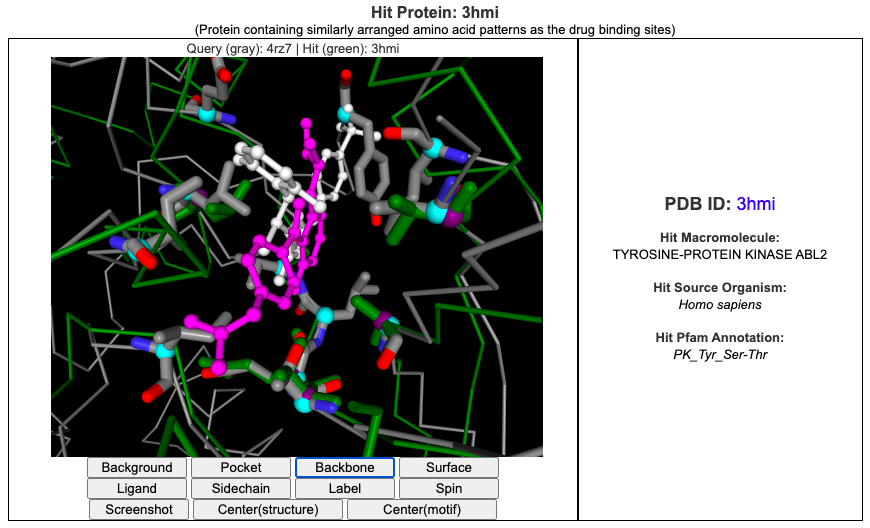

In similar manner, searching for similar patterns of amino acids can be performed from PDB Ligand ID search. For example, searching for 'VX6' on the interface will returns list of matched protein structures that is bound to VX6.
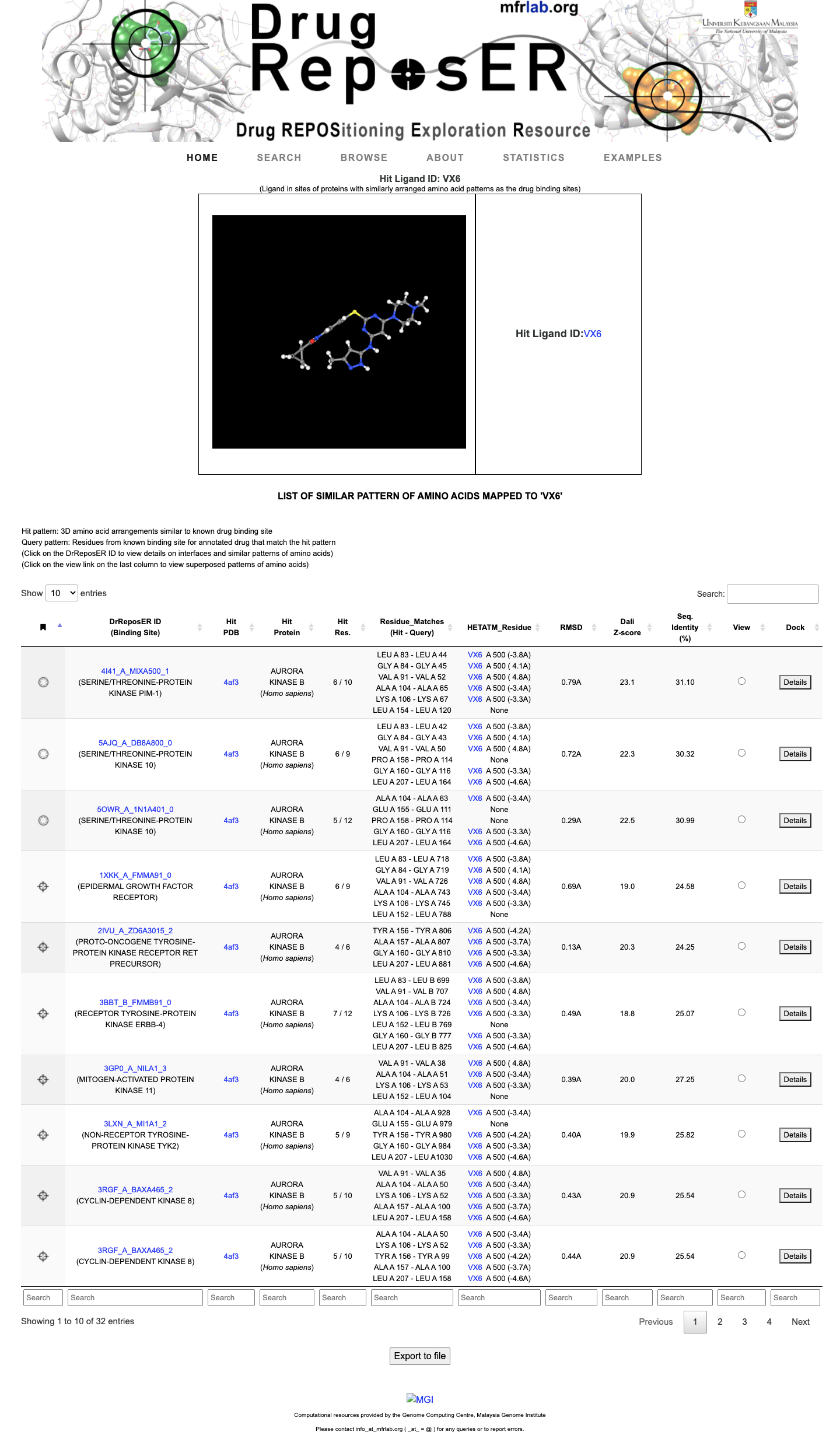
References:
1) Jin, M. et al. (2013). Discovery of potent, selective and orally bioavailable imidazo[1,5-a]pyrazine derived ACK1 inhibitors. Bioorganic & Medicinal Chemistry Letters. 23(4):979-984. (link)
1) Mahajan, K. & Mahajan, N. P. (2013). ACK1 Tyrosine Kinase: Targeted Inhibition to Block Cancer Cell Proliferation. Cancer Lett. 338(2):185-192. (link)